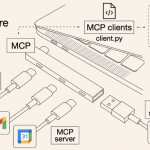目录
本文概览:介绍了@param的引入的目的和应用举例。
1 由一个问题引入
1.1 问题描述
当在Dao对象中定义了如下接口
|
1 |
int insert(HourRoomEntity hourRoomEntity); |
对应的mapper.xml的设置如下
|
1 2 3 4 5 6 7 8 9 10 11 12 13 14 |
<insert id="insert" parameterType="com.qunar.scm.ct.model.hourRoom.HourRoomEntity" useGeneratedKeys="true" keyProperty="id"> insert into hour_room( version, pkg_serial, attribute, create_time ) values( #{version}, #{pkgSerial}, #{attribute}, now() ) </insert> |
上述没有任何问题,但是当在DAO中加入这个@Param时,如DAO
|
1 |
int insert(@Param("hourRoomEntity") HourRoomEntity hourRoomEntity); |
此时就会报错
Error rg.mybatis.spring.MyBatisSystemException: nested exception is org.apache.ibatis.binding.BindingException: Parameter ‘version’ not found. Available parameters are param1, hourRoomEntity
1.2 问题分析
1. 当使用@Param时,就会将@Parm的所有参数装到一个map中,必须写成如下格式
|
1 2 3 |
#{hourRoomEntity.version}, #{hourRoomEntity.pkgSerial}, #{hourRoomEntity.attribute}, |
所以,对于使用@Param修饰一个对象类型,需要使用如下格式
|
1 |
#{对象.成员} |
2. 当不使用@Param时,就当成一个对象来处理,只需要写成
|
1 2 3 |
#{version}, #{pkgSerial}, #{attribute}, |
1.3 举例【单个参数时建议不写@Param】
1. 对于dao中定义如下两个函数:有@Parm和无@Param两种情况:
|
1 2 |
int insert(MerchantAdditionalEntity entity); int updateById(@Param("entity") MerchantAdditionalEntity entity); |
2. 对应mapper.xml
(1)有@Param
|
1 2 3 4 5 6 7 8 9 10 11 |
<update id="updateById"> UPDATE crm_mdc_additional SET <if test="entity.orgId != null"> org_id = #{entity.orgId}, </if> <if test="entity.publicTime != null"> public_time = #{entity.publicTime}, </if> ...................... </update> |
(2)无@Param
|
1 2 3 4 5 6 7 8 9 10 11 12 |
<insert id="insert"> INSERT INTO crm_mdc_additional ( serial_number, org_id ) VALUES ( #{serialNumber}, #{orgId} ) </insert> |
2 @Param解析
2.1 引入目的
引入的目的就是为了在Dao接口中支持多个参数。
2.2 举例
1. 问题描述
当接口中的参数有多个时,如
|
1 |
void update(type1 param1,type2 param2); |
此时应该写为
|
1 |
void update(@Param("param1")type1 param1,@Param("param2")type2 param2); |
2. 分析如下:
如下内容主要意思就是可以通过@Param来实现多参数,这正是@Param的引入的意义
You can pass multiple parameters to a mapper method. If you do, they will be named by their position in the parameter list by default, for example: #{1}, #{2} etc. If you wish to change the name of the parameters (multiple only), then you can use the @Param(“paramName”) annotation on the parameter.
3. 实例如下
|
1 2 3 4 5 |
public interface CustomItemMapper { Integer insert(@Param("item")CustomItem item, @Param("extra") String someparam); } |
对应的mapper
|
1 2 3 4 5 6 7 |
<insert id="insert" useGeneratedKeys="false" parameterType="map" keyProperty="id"> insert into CustomItem (id, column2, column3, column4, column5, column6) values (#{item.id}, #{item.field1}, #{item.field2}, #{item.field3}, #{item.field4}, #{extra}) </insert> |
3 @Param和parameterType关系
二者的关系如下
- 如果使用了@Param,就不需要在mapper.xml中设置parameterType属性了
- 如果不使用@Param,就需要在mapper.xml中设置parameterType属性了。
所以进行如下总结
- 如果在dao接口代码中,函数中参数只有一个,那么此时就在mapper.xml中使用parameterType,不使用@param了;
- 如果在dao接口中代码中,函数中参数有多个参数时,此时就使用@param,在mapper.xml中不再需要parameterType了。






